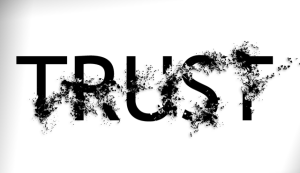[ois skin=”Evil Popup”]
By Marci Liroff
I’m shocked that many people still don’t know how to use some of the most basic online platforms. Here’s a handy guide to make sure you’re up to speed on some of the essential sites with which you need to be familiar.
Skype
Know how to use it before your coaching or audition session. I’ve had too many coaching sessions recently during which the client is using Skype for the very first time and has no idea how to use it and the clock starts ticking down on our session because we’re spending most of it simply trying to connect. Bad enough to do this in a private coaching session with me, but so much worse during a Skype appointment with a director! The other day, I had a client try to connect with my personal account on Facebook because she insisted that we needed to be connected there in order to use FaceTime. It took me several emails to explain that these are two completely different platforms.
Use your time wisely beforehand to figure out how Skype works. Test your sound. Test your Internet connection to make sure our video call will be smooth and not freeze every few seconds. Sometimes I find that FaceTime works better than Skype. It all depends on where I’m doing the session and my Internet speed.
PayPal
I use PayPal daily to get paid for my private coaching and classes. It’s a seamless, user-friendly website and app. I’m still surprised when people don’t know how to use it and I have to spend my time sending emails explaining how to sign up, connect your bank account and credit card, and send a payment. Did you know if you choose “friends and family” (in the U.S.) the vendor (me) won’t be charged a service fee? I explain this in detail in all my payment instructions and people still don’t get it.
Again, figure out how this website works in advance so that you won’t be stressing out about making a time-sensitive payment.
Self-taping
We’ve talked a lot about this subject, but you need to understand exactly how to make a great self-taped audition. These days, we’re casting from locations all over the globe and we want to include actors not in Hollywood. We depend on your self-taped auditions. A very simple and clear-taped audition is all we need. Lately I’ve been seeing several self-taped auditions that are more like short films (exterior locations, supporting actors, musical soundtrack), but those additional elements just distract from what we need to see—you interacting with an offscreen scene partner. For your self-taped audition, I don’t need to see what kind of filmmaker you are. Please reacquaint yourself with my blog “How to Self-Tape Your Audition Like a Rock Star” for specific details.
Video upload sites
Learn how to post and password-protect your videos on a site like Vimeo so that you aren’t sending giant files over email that I then have to spend time downloading. Since you don’t own the intellectual property (the material you’re using for your auditions), make sure you’re not posting to YouTube for all to see. I’ve had producers get very pissed off at me when they see our auditions on YouTube that leaked scenes of our script.
I’m sure by the time you read this there will be several more technologies, online platforms, and apps you’ll need to learn. In the meantime, there are plenty of online support videos that explain in detail how to sign up for these various sites and apps. Make sure you do the research now so you’re ready when the opportunity arises.
Make sure to check out my new online course “How To Audition For Film and Television: Audition Bootcamp”. You can view it on your laptop or your mobile device and your subscription gives you lifetime viewing privileges for this course. I’ll be adding lectures throughout the year.
Like this article? Help spread the word!
Click to tweet!
(Warning: I grant permission to share my blog as written with no additions or deletions. Posting my blog is in no way an endorsement of another site unless you obtain my written consent.)






Recent Comments